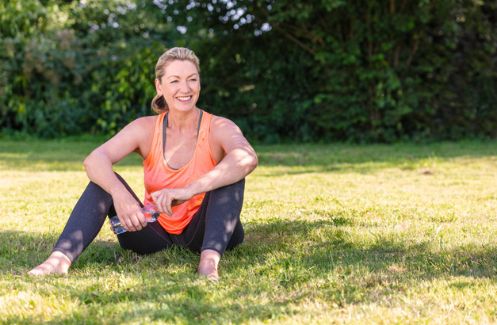
6 steps to creating your ideal summer workout routine
Exercise during a heatwave isn’t much fun. Training and Nutrition Specialist David Wiener reveals 6 key steps to creating an ideal summer workout routine to ensure you stay on track of your goals
As the weather gets warmer, it can be hard to stick to an exercise regime. Sometimes the last thing you want to do in the hot weather is exercise.
But exercising over the summer months doesn’t have to be a chore.
the last thing you want to do in the hot weather is exercise
Creating an exercise regime which works for you over the summer months is key to success, helping you commit to your training and hit your goals, whatever they may be.
An exercise schedule which is unique to you is especially important, making sure it fits into your life. Here are 6 simple steps that can help you create an ideal workout routine during the summer:
#1 Break your workout into smaller chunks
Doing an hour-long workout (or more) can get seriously tiring, both mentally and physically. So, if you’re finding it hard to complete an hour-long sweat session, try breaking it down into 15-minute chunks.
Micro HIIT or mini bursts of intensive exercise can be beneficial for a large number of people, especially for those who do not have a lot of time to spend exercising.
try breaking it down into 15-minute chunks
One of the beauties of Micro HIIT is that you can switch up your training methods by partaking in shorter burst of exercise which can be done throughout the day i.e. first thing in the morning, on your lunch break, or even when you’re waiting for the kettle to boil, or lunch/dinner to cook.

#2 Don’t compare yourself to anyone else
It is easy to watch someone else do the exact same exercises as you and compare yourself to them. Even if someone can do more reps than you, use a higher weight, or just make it look so much easier, don’t be discouraged.
At some point everyone has to start from the beginning, just make sure you’re focused on your own personal fitness goal and that you aren’t getting too ahead of yourself.
take your bigger goal and split it down into smaller, mini goals
#3 Set goals and allow yourself rewards
Setting goals is a great way to ensure you stay motivated and on track. For maximum success, take your bigger goal and split it down into smaller, mini goals so that you can celebrate your successes often.
Allowing yourself small rewards for completing tougher workouts or sticking to your goals is also a good way to motivate yourself to work out and be consistent.
READ MORE: Adult Acne: expert reveals what causes it plus 7 important skincare tips

#4 Keep it varied
One of the easiest ways to lose motivation is by letting your workouts become boring or monotonous.
Investing in a cost effective fitness app like Freeletics will ensure your workout schedule includes variety, keeping your body guessing for optimum results.
committing to working out at the times you have planned
Freeletics has also recently introduced a mindset programme which aims to help users create lasting and positive habits in all areas of their lifestyles, aiding your motivation, sleep and ability to deal with stress.
#5 Make a schedule and stick to it
Making a fitness plan at the beginning of each week and committing to working out at the times you have planned can help you to feel motivated and ensure you work out regularly.
If you do have to miss a workout for some reason, don’t feel disheartened. Just make a real effort to get back on track and stick to the plan you have set out for yourself.
READ MORE: 3 ways to reduce stress in 24 hours

#6 Allow time to recover
Often really overlooked, recovery is key in any workout routine. You don’t have to or should not be working out every day, this will lead to burn out and in some more serious cases, injury.
I would recommended having at least two rests days in a week
Going into any new workout routine too intensely can make you give up much faster. Allowing yourself time to rest and recover will truly be the difference in sticking to an exercise regime or not.
As a rule of thumb, I would recommended having at least two rests days in a week. This gives your muscles time to repair themselves, not only resulting in you being ready for your next workout, but also resulting in stronger muscles in the long run.
Like this article? Sign up to our newsletter to get more articles like this delivered straight to your inbox.